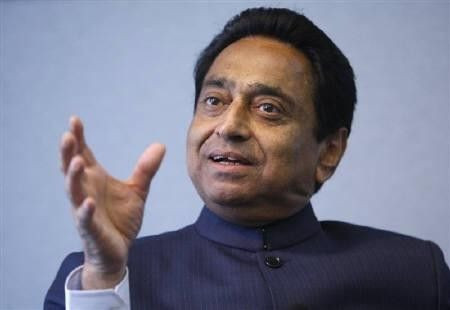Cabinet reshuffle boosts focus on urban growth

A ministerial reshuffle has signalled India may give sorely-needed focus to the development of its burgeoning cities, whose erratic expansion is seen as a major brake on economic growth.
With 590 million people -- nearly double the population of the United States -- seen living in its cities by 2030, a McKinsey Global Institute report said India needed to spend $1.2 trillion by then the meet projected urban demand.
Analysts see the appointment of influential but controversial Congress party heavyweight Kamal Nath to the urban development ministry bringing a higher profile and more investor-friendly climate to the brief.
Urban infrastructure does require an overhaul and frankly I don't think Jaipal Reddy did an incredible job, political analyst Mahesh Rangarajan said, referring to Nath's predecessor in the position. Kamal Nath will be very suited to that.
But Prime Minister Manmohan Singh's reshuffle dashed hopes of more dramatic change to tackle underperforming ministries, a sign that progress on infrastructure can still be hostage to the necessities of coalition politics and the slow pace of reform.
In his previous job as roads minister, Nath performed better than his predecessor in accelerating the growth of building roads and national highways in what is the world's second largest roads network, though he fell far short of his own much vaunted target to build 20 km (12.5 miles) of roads per day.
His new goal is to revitalise the country's rapidly expanding cities, where analysts say years of underinvestment and erratic planning have left a legacy of power and water shortages, choked traffic and underdeveloped sanitation.
The Congress-led government has made an aggressive push to sell its infrastructure story as an enormous opportunity for the private sector, with a planned spend of $1.5 trillion over a decade to 2017.
India's crumbling infrastructure knocks an estimated 2 percentage points off growth and forms a constant unflattering comparison with rival emerging power China.
Drivers face an average peak morning commute of more than one-and-a-half to two hours, while its cities treat only 30 percent of sewage generated and its sewers reach less than two-thirds of the population, McKinsey said.
FOREIGN INVESTORS
Nath has already pitched for private and foreign investors to pour funds into cities through public-private partnerships and said he was exploring the creation of a real estate regulator.
Indian cities are already among the most populous in the world, with infrastructure ranging from the world-class to the woeful.
The financial capital Mumbai, home to 18 million people, has the world's most expensive private home and a slick new sea-link set against an older India of the stench of sewage, piles of uncollected rubbish and Asia's largest slum.
Two decades of liberalisation from a state-run, more agriculture-focused economy have given enormous opportunities to private players in India's city development, though projects can get caught in years of red tape and legal delay.
A push for public-private partnerships could open more doors for infrastructure firms such as GMR Infrastructure Reliance Infrastructure Ltd and SPML Infra.
GMR operates India's biggest airport while Reliance leads a consortium to build the Mumbai metro, mostly recently securing $2.6 billion worth of funding in October for a second line.
SPML runs water utilities for municipalities in Maharashtra and plans to bid for similar contracts in central and northern India.
COALITION POLITICS
The urban development ministry is not seen as a high-profile one, but it may change under Nath, who was credited with injecting private sector interest into road building.
While he attracted a fair share of critics for missing his own target, Nath oversaw India building roads at a pace of 13 km per day, faster than the 5.9 km it achieved in 2009 and 2 km in 2006, government data shows.
The appointment of Nath, who cut his teeth as trade minister at the height of fraught 2008 talks for a global commerce deal, will test his skills as a negotiator with the states and cities.
The Planning Commission last year listed better co-ordination between federal and state governments, certain states' unwillingness to reform city governance and the need for much greater private investment as brakes on urban growth.
This would be more an exercise in persuasion: to what extent he is able to persuade the state governments and local municipal bodies which are largely responsible for the urban infrastructure, a Planning Commission adviser told Reuters.
But Manmohan Singh's low-key reshuffle raised renewed questions about an unwillingness to take tough decisions.
His government has continued a policy, long practiced in Indian politics, of ring-fencing the railways ministry as a gift to a government ally. Railways is currently headed by Mamata Banerjee, whose first priority is to win control of her home state of West Bengal in state elections due by May.
In another infrastructure sector, telecoms, it took a $39 billion graft scandal for the prime minister to boot out the minister from the telecommunications ministry, also a Congress handout to a coalition ally.
Railways will likely miss the government's investment targets by 23 percent in the five years to 2012, more than twice as much as roads, according to a Planning Commission adviser.
You take somebody like Mamata Banerjee. Everybody knows that her first priority is West Bengal, said Paranjoy Guha Thakurta, an independent political economist.
She's always been populist. If in the process the railways' finances go for a six, let it go. That's always been her attitude.
© Copyright Thomson Reuters 2024. All rights reserved.





















